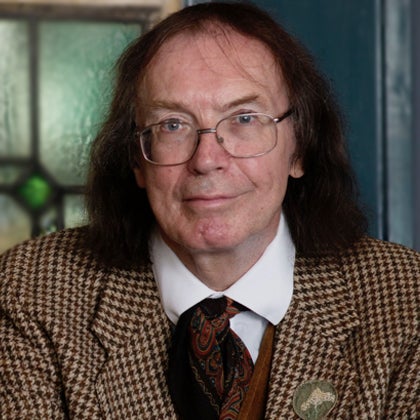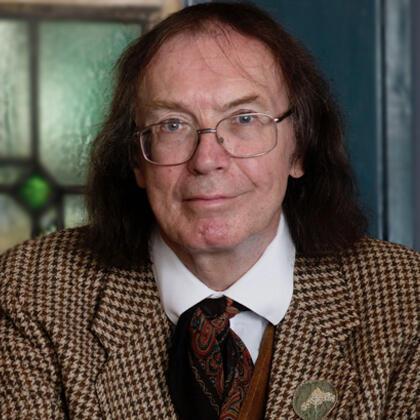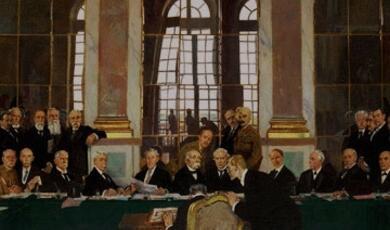What is Modern Paganism?
Share
- Details
- Text
- Audio
- Downloads
- Extra Reading
What is modern Paganism, and how does it relate to witchcraft, Druidry and other phenomena? This lecture is designed to answer that question, and in doing so provide an overview of the different traditions that make up Paganism today. It shows what they have in common and what makes each one unique. It suggests the ways in which Paganism differs from other religious traditions and what it has especially to offer the modern world. It also addresses the question of its relationship with ancient paganism.
Download Text
What Is Modern Paganism?
Professor Ronald Hutton
18 September 2024
Modern Paganism consists of a related complex of religions which have appeared during the past century, originally starting in England, and which are inspired by beliefs and images taken from the religions of pre-Christian Europe and the Near East. They have some continuous links with those ancient religions, such as learned ceremonial magic, simpler folk magic, popular seasonal customs, and the love affair which Christian Europe maintained with the art and literature of ancient paganism, and especially that of Greece and Rome. All these were carried on for around a thousand years by people who were at least nominally Christian, without actual worship of the ancient deities. The change in the twentieth century was to recombine varying elements of all four and to put the deities back into the mix.
Three characteristics of modern Paganism are identified by the British Pagan Federation, apart from the basic one of inspiration by ancient pagan ideas and forms. One is a recognition of the female principle of divinity, so that goddesses are honoured as well or instead of gods, and priestesses officiate as well or instead of priests. The second is an acceptance of an inherent divinity within the natural world. The third is a belief that the divine does not give laws to humans or monitor their behaviour but leaves them free to develop their own potential to the full, while doing as little harm as possible to others.
In addition, I would add some further features, from my own observation. The first is that the aim of modern Paganism is not only to honour deities but to draw out the divine in humanity. A literal belief in goddesses and gods is not necessary, though many Pagans have one. There is an underlying aim to cultivate self-knowledge and self-control, and perhaps more arcane powers. The second feature is to abolish the traditional Western distinction between religion, in which humans ask divinities for help and then await a response, and magic, in which they themselves exert some control over uncanny means by which they obtain their desires. Deities are not so much worshipped as worked with, as friends and counsellors, which is why Paganism today is almost completely lacking in the widespread ancient principle of sacrifice. The third feature is that many forms of modern Paganism are mystery religions, carried on by groups requiring training and initiation, usually through three levels, and requiring active participation by all members. Many of these groups are literal, but they can be virtual as most Pagans are now solitaries connecting through electronic media. A fourth feature of Paganism is that ritual, rather than doctrine and theology, is vital: the idea is to experience the divine directly and then rationalise the experience later and individually, if at all. A final one is that Paganism is highly eclectic and adaptable, taking deities, motifs, and associations from a range of other traditions, extending to Buddhism and Hinduism, native America, the modern earth mysteries, and modern feminist spirituality, according to the taste of groups or even individuals.
Paganism today is found across the Western world in three main varieties. The oldest in its present form, and most influential, is modern pagan witchcraft, often called Wicca. This is a blend of pagan themes with ceremonial magic, centred on a goddess and god of nature in which the goddess is the senior partner. It is carried on either by individuals or by ‘covens’ usually of six to twelve people, led ideally by a woman supported by a man. The second is Druidry, which shares features with Wicca, notably ceremonies held in circles consecrated for the occasion with spiritual gateways at the four cardinal points. It is based on societies known as orders, with local groups called groves, run by either sex, and able to be larger than Wiccan covens as the rituals are less intense and less concerned with divinity or magic. Druidry encourages a relationship with the natural world in which its members live, and with the former peoples who inhabited it. The third important variety is shamanism, a loose term for practices intended to contact a spirit realm, often in an altered state of consciousness. It draws inspiration from tribal traditions in the non-European world. There are however many smaller varieties, such as those focused on specific ancient pagan traditions such as Egyptian, Graeco-Roman, Norse or Anglo-Saxon.
In the last analysis the worth of this relatively new complex of religions can only be judged by the satisfaction that it gives to members and the benefit, or at least lack of damage, that it accords to society. By these yardsticks, Paganism fares relatively well. Because it is not a system of personal salvation or mass apocalypse and does not demand financial dues or unquestioned obedience from members, it has produced no mass suicides or major scandals, and Pagans do not feature disproportionately as criminals or lunatics. It is tolerant of other religious systems and expects to be part of multi-faith societies. Its images and ideas have already made an impact on recent literature, art, and music as a creative resource. It seems destined to become one important spiritual component of a Western world characterised by ethnic, cultural, and ideological diversity and based on individual choice.
© Professor Ronald Hutton, 2024
Further reading
Hardman, Charlotte, and Graham Harvey, Paganism Today. 1995.
Harvey, Graham, Listening People, Speaking Earth. 1997.
White, Ethan Doyle, Pagans. 2023.
© Professor Ronald Hutton, 2024
Further reading
Hardman, Charlotte, and Graham Harvey, Paganism Today. 1995.
Harvey, Graham, Listening People, Speaking Earth. 1997.
White, Ethan Doyle, Pagans. 2023.
Part of:
This event was on Wed, 18 Sep 2024
Support Gresham
Gresham College has offered an outstanding education to the public free of charge for over 400 years. Today, Gresham plays an important role in fostering a love of learning and a greater understanding of ourselves and the world around us. Your donation will help to widen our reach and to broaden our audience, allowing more people to benefit from a high-quality education from some of the brightest minds.


 Login
Login







